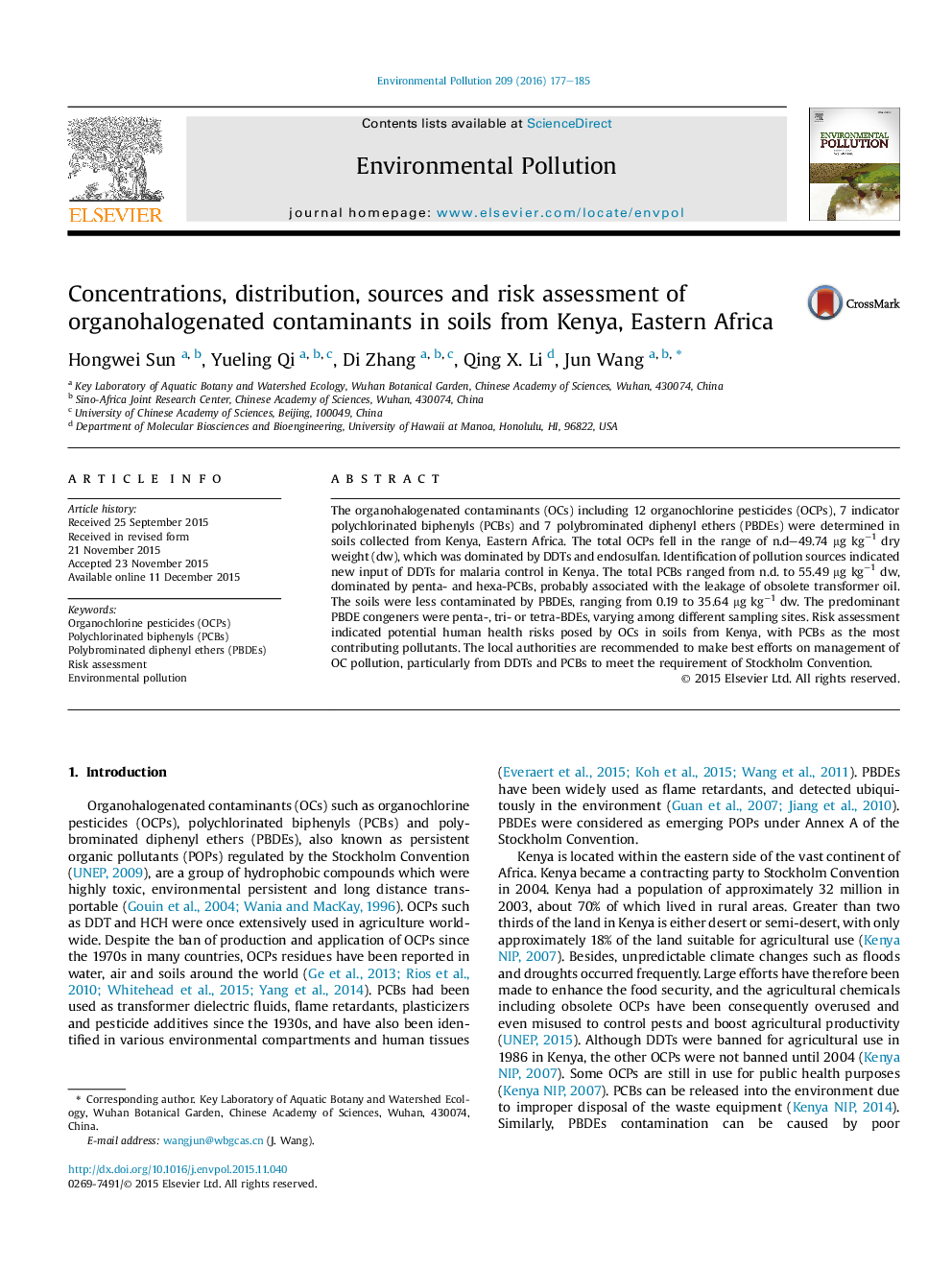| Article ID | Journal | Published Year | Pages | File Type |
|---|---|---|---|---|
| 4424278 | Environmental Pollution | 2016 | 9 Pages |
•The first report on organohalogen contaminants (OCs) in soils from Kenya.•OCs including OCPs, PCBs and PBDEs were determined simultaneously.•Sources of OCPs, PCBs and PBDEs emission were identified.•Human health risk posed by OCs in soil from Kenya were assessed.•Measures for OCs management were suggested for local authority.
The organohalogenated contaminants (OCs) including 12 organochlorine pesticides (OCPs), 7 indicator polychlorinated biphenyls (PCBs) and 7 polybrominated diphenyl ethers (PBDEs) were determined in soils collected from Kenya, Eastern Africa. The total OCPs fell in the range of n.d–49.74 μg kg−1 dry weight (dw), which was dominated by DDTs and endosulfan. Identification of pollution sources indicated new input of DDTs for malaria control in Kenya. The total PCBs ranged from n.d. to 55.49 μg kg−1 dw, dominated by penta- and hexa-PCBs, probably associated with the leakage of obsolete transformer oil. The soils were less contaminated by PBDEs, ranging from 0.19 to 35.64 μg kg−1 dw. The predominant PBDE congeners were penta-, tri- or tetra-BDEs, varying among different sampling sites. Risk assessment indicated potential human health risks posed by OCs in soils from Kenya, with PCBs as the most contributing pollutants. The local authorities are recommended to make best efforts on management of OC pollution, particularly from DDTs and PCBs to meet the requirement of Stockholm Convention.
